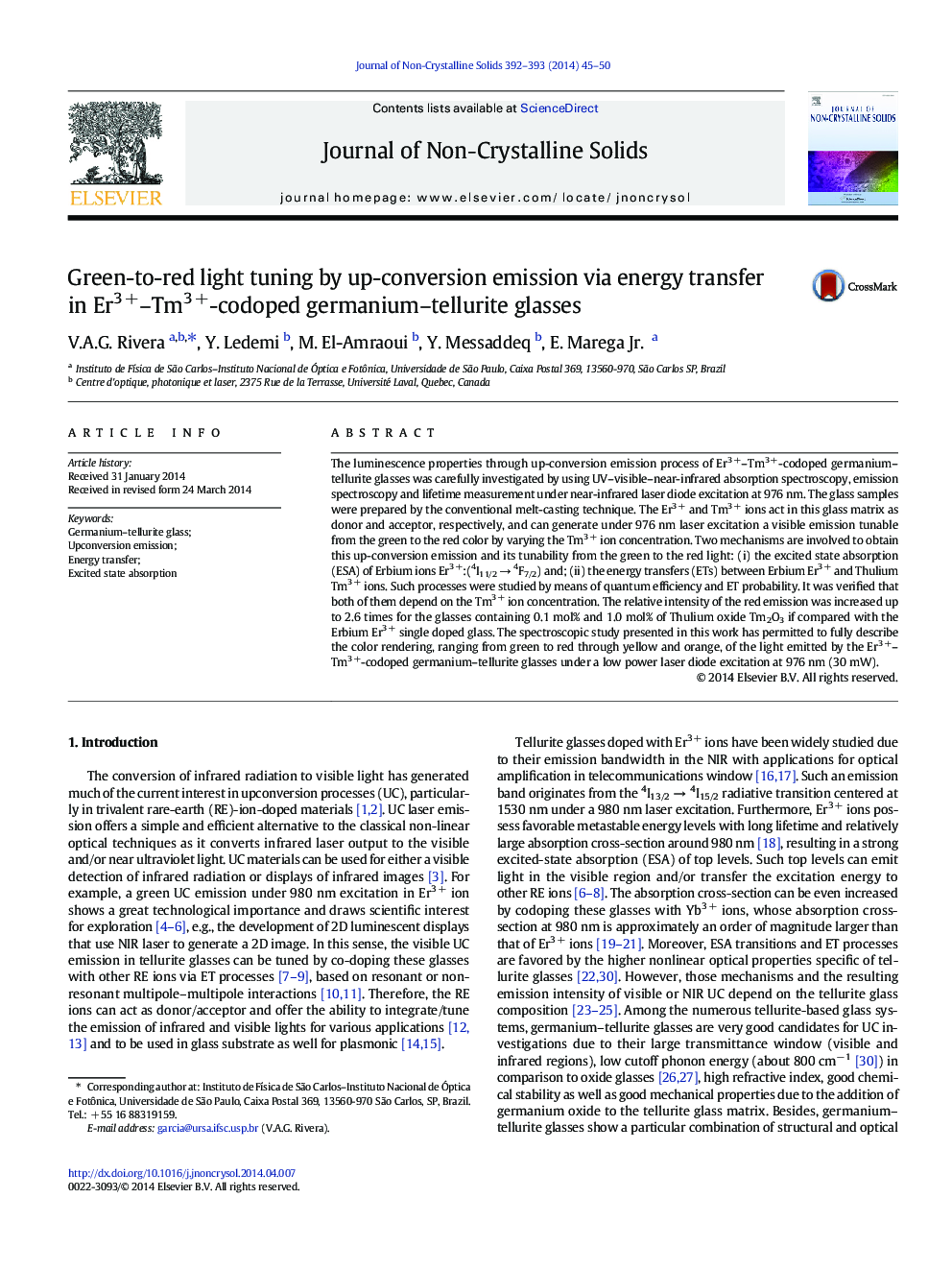| Article ID | Journal | Published Year | Pages | File Type |
|---|---|---|---|---|
| 7902216 | Journal of Non-Crystalline Solids | 2014 | 6 Pages |
Abstract
The luminescence properties through up-conversion emission process of Er3 +-Tm3 +-codoped germanium-tellurite glasses was carefully investigated by using UV-visible-near-infrared absorption spectroscopy, emission spectroscopy and lifetime measurement under near-infrared laser diode excitation at 976 nm. The glass samples were prepared by the conventional melt-casting technique. The Er3 + and Tm3 + ions act in this glass matrix as donor and acceptor, respectively, and can generate under 976 nm laser excitation a visible emission tunable from the green to the red color by varying the Tm3 + ion concentration. Two mechanisms are involved to obtain this up-conversion emission and its tunability from the green to the red light: (i) the excited state absorption (ESA) of Erbium ions Er3 +:(4I11/2 â 4F7/2) and; (ii) the energy transfers (ETs) between Erbium Er3 + and Thulium Tm3 + ions. Such processes were studied by means of quantum efficiency and ET probability. It was verified that both of them depend on the Tm3 + ion concentration. The relative intensity of the red emission was increased up to 2.6 times for the glasses containing 0.1 mol% and 1.0 mol% of Thulium oxide Tm2O3 if compared with the Erbium Er3 + single doped glass. The spectroscopic study presented in this work has permitted to fully describe the color rendering, ranging from green to red through yellow and orange, of the light emitted by the Er3 +-Tm3 +-codoped germanium-tellurite glasses under a low power laser diode excitation at 976 nm (30 mW).
Related Topics
Physical Sciences and Engineering
Materials Science
Ceramics and Composites
Authors
V.A.G. Rivera, Y. Ledemi, M. El-Amraoui, Y. Messaddeq, E. Jr.,
